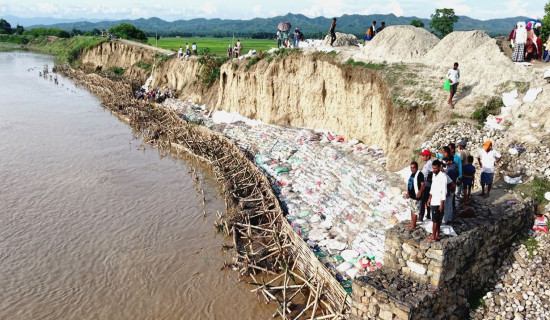- Wednesday, 16 July 2025
Give Youths A Fair Crack Of The Whip
Sugam Gautam
When there’s talk about the Nepali economy and how it can leap to reach new heights for a sustainable period, one doesn’t miss including the prospects of the tourism and hydropower sectors. Tourism and the hydropower sector have always been topping the watchlist, though the country has not been able to leverage the resources to their full capacity. As surprising as it might sound, the country’s economy will take a positive turn even if we can generate half of the full estimated capacity. The possibilities of the hydropower sector and its role in contributing to the development of the nation have almost become like a fairytale now.
From the school level itself, kids are conveyed that Nepal is the second richest country in terms of water resources and that the nation is brimming with possibilities. There’s no calculation of how many generations have grown old listening to the same statements. If the political leaders and parties had focused on the hydropower sector, youths would not be flying abroad for their livelihoods today. There would be employment opportunities for everyone depending on their qualifications and skills. Unfortunately, it’s not the case. As many as 1700 people are forced to fly abroad daily due to the lack of economic opportunities here.
Despite this, talks of untapped hydropower potential have not faded into the abyss. There’s no point in taking pride in the untapped potential, especially if so many youths are doomed to spend their productive years serving other nations. If we exclude remittance, the only silver lining in the economy is the tourism sector. Thanks to the aesthetic villages, diverse cultures, breathtaking mountains, and serene lakes, Nepal’s sinking boat is somehow steadied by the massive flow of tourists from across the globe. The tourism sector has provided economic opportunities for both rural and urban populations. This sector will continue to thrive if the challenges are faced with modern solutions that include IT and innovation.
What should have been the primary source of the economy has forever remained stagnant. The industrial and production sector has never been Nepal’s strength. Ironically, even the old industries have failed to keep up, forcing the country to rely on imports. In the last few years, various activists have raised their voices to lift a ban on cannabis, which, according to them, will salve the lousy economy. It is not guaranteed whether cannabis will be legalised or not, and whether it will fare well in the global market. The character of Nepali people and political leaders is such that they just don’t give up being ambitious, and they aren’t interested in taking baby steps.
If we are to become prosperous, we should think differently and do everything from scratch. Widening the eyesight to pounce on every potential sector is the need of the hour. Freelancing in western countries has helped stabilise the youths. The government should invest enough in ICT to support the youths who can go on to earn foreign money from their home. Moreover, small-scale industries should be encouraged. Workshops and training should be provided to every unemployed person so that they can start something on their own and contribute to the domestic market. Recently, an entrepreneur from Baglung has caught everyone’s attention by selling biscuits made of millet. The government has partially funded his small industry, and such actions are always welcome.

















